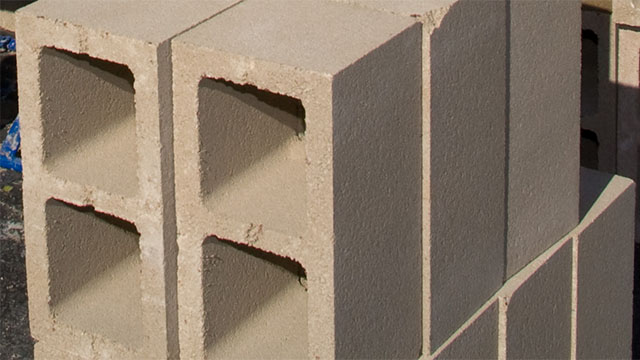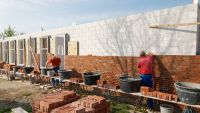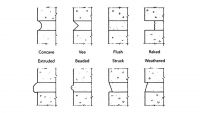
Limestone powder enhances performance of 'green' concrete
Increasing the use of fly ash in concrete could reduce greenhouse gas emissions
By Mark Bello
Adding limestone powder to "green" concrete mixtures—those containing substantial amounts of fly ash, a byproduct of coal-burning power plants—can significantly improve performance, report* researchers from the National Institute of Standards and Technology (NIST) and the Federal Highway Administration (FHWA).
The promising laboratory results suggest a path to greatly increasing the use of fly ash in concrete, leading to sizable reductions in greenhouse gas emissions, energy use, construction costs and landfill volumes.
Global production of cement for concrete accounts for 5 to 8 percent of human-caused greenhouse gas emissions.
Currently, fly ash accounts, on average, for about 15 percent of the binder powders in the ready-made concrete used in the United States. To produce a more green concrete, NIST is researching new material combinations and procedures that could help the industry use fly ash to routinely replace 40 to 50 percent of the ordinary portland cement (OPC), the main binding and hardening agent in concrete.
Because of delays in setting times and questions about its strength in the first few days after application that both "impact its constructability," says NIST chemical engineer Dale Bentz, "green concrete has been a tough sell in large parts of the construction industry." However, Bentz and his FHWA colleagues found that a "judicious combination of fine limestone powder" can help to put these concerns to rest.
So-called high-volume fly ash "ternary" mixtures (including some limestone) that replace between 40 percent and 60 percent of the cement portion not only set at rates comparable to those for typical concrete, but also were superior in terms of key properties.
Initially, the strength of the green concrete mixtures after 28 days slightly lagged that of concrete without any fly ash. However, the team was able to tweak their fly ash-limestone-OPC mixture to overcome the gap, primarily by lowering the water-to-powder ratio and switching to a different standard composition of OPC (ASTM Type III).
Today, global production of OPC totals about 3.5 billion metric tons (3.85 billion tons) annually. Generation of each ton of OPC emits about a ton of carbon dioxide into the atmosphere.
Greater use of high-volume fly ash mixtures could significantly reduce this environmental burden and, at the same time, reduce costs for concrete construction, says Bentz.
For Bentz and his team, the next research challenge is to test their limestone-enhanced mixtures in the field, where curing conditions can vary.
About the Author
Mark Bello is a Public Affairs Specialist for the National Institute of Standards and Technology.


















